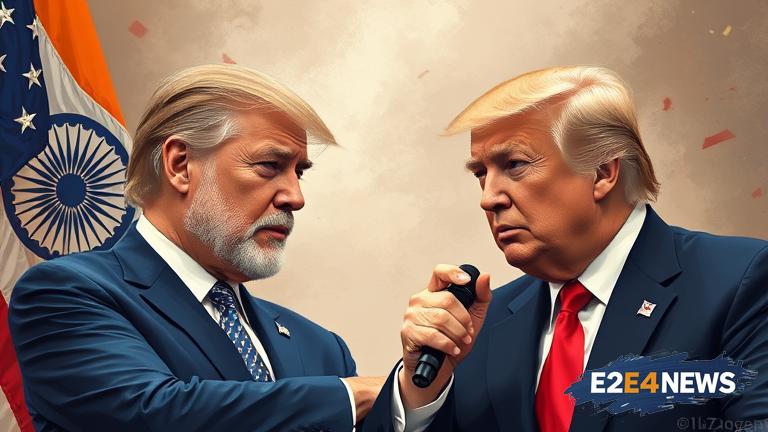The United States and India are on the brink of a trade war as President Trump has once again threatened to impose harsh tariffs on Indian goods due to the country’s continued purchases of Russian oil. This move has sparked concerns among Indian businesses and policymakers, who fear that the tariffs could have a devastating impact on the country’s economy. India has been one of the largest buyers of Russian oil, despite international sanctions imposed on Russia following its invasion of Ukraine. The US has been critical of India’s decision to continue purchasing Russian oil, citing concerns over national security and the need to isolate Russia economically. Trump’s threat of tariffs is seen as a way to pressure India into reducing its dependence on Russian oil and instead opting for American energy exports. However, Indian officials have pushed back against the US demands, arguing that the country needs to diversify its energy sources and cannot rely solely on American imports. The trade tensions between the US and India have been escalating over the past year, with both countries imposing tariffs on each other’s goods. The US has been seeking greater access to the Indian market, particularly in the areas of agriculture and energy, while India has been pushing for greater concessions on trade and investment. The Indian government has argued that the country’s economic growth and development depend on its ability to access affordable energy sources, and that the US demands are unrealistic and unfair. The US, on the other hand, has argued that India’s continued purchases of Russian oil are undermining the international effort to isolate Russia and that the country needs to take a stronger stance against Russian aggression. The trade tensions have also sparked concerns among Indian businesses, who fear that the tariffs could lead to a decline in exports and a loss of competitiveness in the global market. The Indian government has been seeking to diversify its trade relationships and reduce its dependence on the US market, but the country still remains one of the largest exporters of goods to the US. The US-India trade relationship is complex and multifaceted, with both countries having significant economic and strategic interests in each other. However, the trade tensions have highlighted the challenges and disagreements that exist between the two countries, particularly in the areas of trade and energy. The Indian government has been seeking to promote the country’s economic growth and development through a range of policies and initiatives, including the ‘Make in India’ program and the ‘Digital India’ initiative. However, the trade tensions with the US have created uncertainty and unpredictability, making it challenging for businesses and investors to plan for the future. The US-India trade relationship is also influenced by a range of geopolitical factors, including the country’s relationships with other major powers such as China and Russia. The Indian government has been seeking to balance its relationships with these countries, while also promoting its own economic and strategic interests. The trade tensions with the US have highlighted the need for India to diversify its trade relationships and reduce its dependence on any one country or market. The Indian government has been seeking to promote the country’s exports and attract foreign investment, particularly in the areas of manufacturing and technology. However, the trade tensions have created challenges and uncertainties, making it difficult for businesses and investors to navigate the complex and rapidly changing trade landscape. The US-India trade relationship is likely to remain a major focus of attention in the coming months and years, as both countries seek to promote their economic and strategic interests and navigate the complex and challenging trade landscape.





